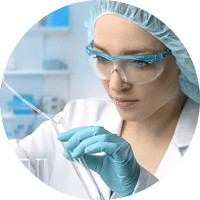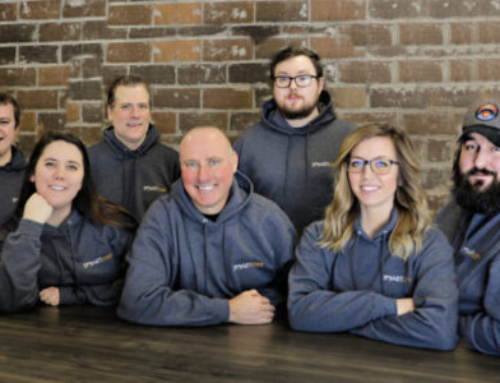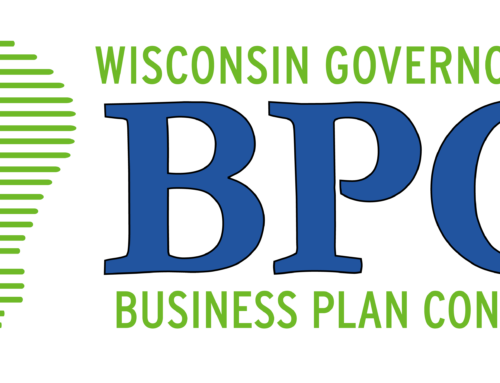We recently spoke with Christopher P. Salm, CEO of Ab E Discovery, a company that partners with entrepreneurial scientists to find the most direct, deliberate paths to take bio-functional feed ingredient technologies from discovery to impact.
Q: Tell me about yourself and the company’s history.
A: Ab E Discovery was born from a game-changing discovery out of Professor Mark Cook’s lab at the University of Wisconsin-Madison, nurtured by entrepreneurial scientists who took its impact beyond the lab and into the marketplace. Mark’s research and entrepreneurial activity (he had started several other companies and had over 200 patents worldwide) made him a leader in commercializing breakthrough discoveries. However, he recognized the value in using additional industry expertise to elevate his next project.
In 2015, Mark approached me to contribute my industry knowledge and expertise to the creation of Ab E Discovery, a startup intended to bring this technology, Cosabody, to market. I’ve spent nearly 30 years in the meat industry, focusing on innovation and relationships both at leading food companies and my own company, Salm Partners. Together with co-founder and Chief Technology Officer Jordan Sand, we grew Ab E Discovery and brought Cosabody from lab to market industry standard.
However, we soon realized that our situation wasn’t a unique one; across animal agriculture, there was a need for knowledgeable actors to bridge the gap between research and industry. Given our collective expertise, we chose to focus on bio-functional feed technologies, where we continue Mark’s legacy in applying and sharing discoveries to drive impactful innovation.
Q: What is Ab E Discovery?
A: Ab E Discovery partners with entrepreneurial scientists to lead their technologies from discovery to impact. A full-service commercialization resource, Ab E Discovery focuses on bio-functional feed technologies and delivers the expertise, knowledge and hands-on support needed to develop and manufacture industry-ready innovations. The Ab E Discovery team applies decades of industry and research experience to ensure technologies’ scientific and commercial success.
Q: What Wisconsin resources has Ab E Discovery utilized?
A: We maintain a very close relationship with UW-Madison, and the “Wisconsin Idea” does a tremendous job of embodying the work we do. The College of Agriculture and Life Sciences is of course an extraordinary institution, both in terms of discoveries and the knowledge it encompasses.
Additionally, we’re honored to receive support from WEDC, as we greatly admire the work that the organization is doing to drive innovation and potential—both economic and individual—within Wisconsin. WEDC provides invaluable resources and frameworks for entrepreneurs looking to achieve not only success but also impact in the region.
Through our commercial production arm, Ab E Manufacturing, we’ve also partnered with the City of Waterloo and Jefferson County to build a manufacturing headquarters and production facility on property in the City’s industrial park. We’re excited about the resources and talent that Waterloo brings to the table, and we look forward to contributing to its growth and economic development.
Q: What stage is the company at today, and what have been some milestones along the way?
A: We’ve been around since 2015, and while we have made tremendous progress, we are still a relatively young company. On a larger scale, some of our milestones have included the decision to launch Ab E Manufacturing, as well as the establishment of some key partnerships. More specifically relating to technologies like Cosabody, we’ve hit a number of exciting milestones: advancing and standardizing the technology (it’s one thing to perform an experiment in the lab, and another to do it commercially); the jump from benchtop to commercial production process; and starting to define a commercial supply chain, which makes actual production feel that much closer.
Most recently, we announced a new global in-licensing agreement with Elanco Animal Health, a division of Eli Lilly and Company, to further develop and bring the technology to market—a tremendous moment for both Ab E and Cosabody. It’s really exciting to have brought this innovation through our commercialization process, to the point where an industry leader like Elanco wants to collaborate.
Q: How does your business benefit from being located in Wisconsin?
A: Wisconsin is at the heart of a great deal of work in the animal agriculture industry. Within the state, there is a great deal of knowledge, research and resources to tap into, which provides a great deal of value to both us and our partners. At the same time, there’s a rapidly growing startup economy that’s very much oriented around this space. Appropriately, it’s a bit of a different culture than Silicon Valley or New York City, and I think that allows entrepreneurs to build a foundation for their businesses that really aligns with the industry we’re in.
Q: Who are your key customers, and where do you see growth opportunities?
A: Our customer base includes people at multiple points of the commercialization process, but our primary focus is on groups at two key points: the beginning and the end. First and foremost, we are dedicated to commercializing entrepreneurial science: partnering with researchers and scientists to find a path to market for their discoveries, where they can have maximum impact in the hands of people who can use them. These are brilliant people who want to get their technology into the market but may not have the knowledge, resources or experience necessary to do so. For these scientists, we can provide support in areas like manufacturing and quality and regulatory, so they can continue focusing on their primary goal: the science.
At the other end of the spectrum, we partner with entrepreneurs and companies seeking breakthrough technologies that address industry challenges. This includes individuals and organizations in the animal agriculture industry focused on growth, innovation and using science-based solutions to solve complex problems. Again, we’re not particularly focused on roles or titles—we’re looking for people in this space with a passion for championing impactful new technologies.
Q: What has been the biggest challenge for you? What advice do you have for other entrepreneurs facing similar challenges?
A: You can’t do everything at once. The forefront of innovation is a really exciting place to work, with infinite possibilities and more discoveries every day. On top of that, having a great team with the skills, motivation and attitude to take on new challenges opens up even more opportunities—both a blessing and a curse!
Throughout our growth as a company, focus has played an increasingly important role in providing a compass for decision-making, both day-to-day and at a higher level. We regularly revisit our mission, values and purpose to make sure that our work aligns with those pieces. At the end of the day, we’re a startup with limited resources, so we have to make sure that they’re maximized to accomplish the work we’ve set out to do. I’d also recommend that other entrepreneurs think through putting a system in place to help evaluate opportunities for both value and focus. This looks different for everyone, but we’ve found it incredibly helpful in sense-checking and guiding our work.
Q: What sets the company apart from competitors?
A: Having expertise in both the industry and research sectors allows us to take a holistic approach to finding the most direct, deliberate path to market for a breakthrough technology. We’re able to consider the process from multiple angles, ultimately leading to scientifically sound technologies with significant industry impact. From our vantage point at this intersection, we see a lot of the bigger picture—a perspective that allows us (and our partners) to focus on aligning science and end-user value at every stage of the commercialization process.
As a result, we can take a hands-on, boots-on-the-ground approach to bringing technologies to market. We help our partners to not only define their commercialization paths, but to actually work alongside them to execute. Having gone through the process ourselves, we can navigate some of the common pitfalls and focus on maximizing efficiency and effectiveness across the board. We think of these relationships as partnerships rather than customer/client relationships—intended to utilize our gifts, talents, knowledge and experience to serve others.









FOLLOW US